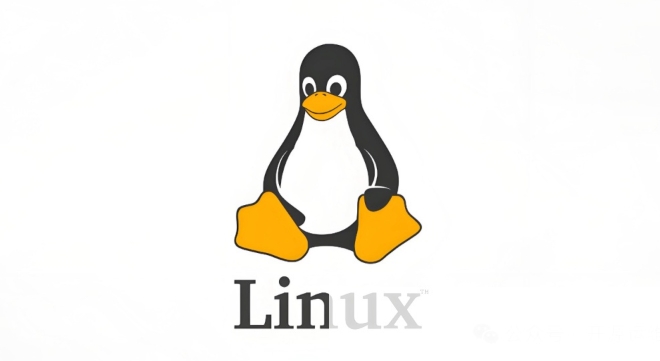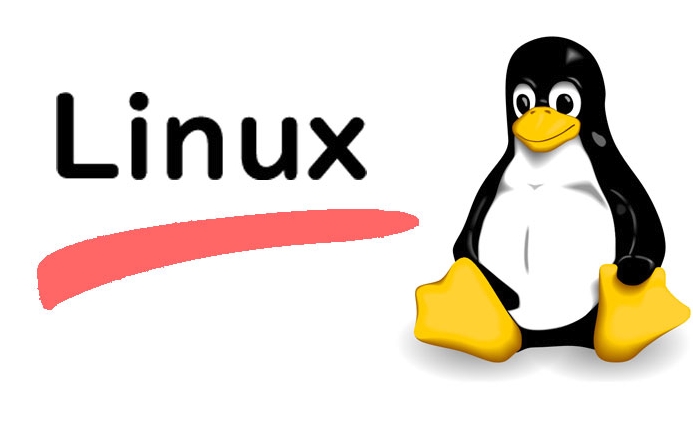There are three main situations for modifying Linux passwords: 1. Modify the current user password, use the passwd command, enter the original password and set a new password; 2. The administrator changes other user passwords, uses the sudo passwd user name, and directly sets a new password; 3. When forgetting your password, reset it through single-user mode, restart and enter the GRUB menu to select recovery mode, and use passwd to modify it under the root shell. Note that the password should be complicated and changed regularly to avoid affecting the system account. Pay attention to permissions and security policies when operating.

Changing passwords is actually not difficult in Linux, but many people tend to get stuck in commands or permissions when they operate for the first time. Simply put, you only need to use the passwd command and pay attention to permissions and system types.

Modify the current user's password
This is the most common requirement, such as remembering your login password and wanting to change to a more secure one. The operation is very simple:
- Enter the command:
passwd - The system will first ask you to enter the current password to verify your identity
- Then you will enter the new password twice
Note that characters will not be displayed on the screen when entering a password, which is a normal security mechanism. If you enter the current password incorrectly, the system will refuse to modify it. New passwords should be as complex as possible, such as including uppercase and uppercase letters, numbers and symbols.

Modify the password of other users (root permission is required)
If you are an administrator and want to change someone else's password, you need to use sudo or log in as root.
- Use the command:
sudo passwd 用戶名 - Then enter the new password you want to set
For example, if you want to change the password of the user testuser , enter:

sudo passwd testuser
At this time, you don’t need to know the other party’s original password, just set the new password. But be careful and don't mistakenly change the password of the system account, such as root or daemon , which may affect the system operation.
Modify password without password (single user mode)
Sometimes you forget your password, or you are a newly acquired system and want to reset your password, you can enter single-user mode.
- Restart the system
- Hold down
Shiftkey (BIOS) orEsc(UEFI) at startup to bring up the GRUB menu - Select "Advanced options", then select "recovery mode" or similar options
- After entering, select "Drop to root shell prompt"
- Enter the command:
mount -o remount,rw /(Some systems are read-only by default) - Then use
passwd 用戶名to modify the password
After completion, enter reboot and restart the system. This method is suitable for most mainstream Linux distributions, such as Ubuntu, Debian, CentOS, etc.
Password Policy and Security Recommendations
- Password complexity : It is recommended to include at least 8 digits, including upper and lower case numeric symbols
- Regular replacement : Especially for server accounts, it is recommended to change them every 3 to 6 months
- Do not reuse passwords : try to be different between different systems
- Using password managers : such as KeePassXC, you can safely store and generate passwords
In addition, some systems will limit the frequency of password modification, such as not being able to change it immediately after it has been modified, which is for security reasons.
Basically that's it. It is not complicated to change passwords on Linux, but you need to pay attention to permissions and operation methods. Just don’t change the password of your system account randomly.
The above is the detailed content of how to change password in linux. For more information, please follow other related articles on the PHP Chinese website!

Hot AI Tools

Undress AI Tool
Undress images for free

Undresser.AI Undress
AI-powered app for creating realistic nude photos

AI Clothes Remover
Online AI tool for removing clothes from photos.

Clothoff.io
AI clothes remover

Video Face Swap
Swap faces in any video effortlessly with our completely free AI face swap tool!

Hot Article

Hot Tools

Notepad++7.3.1
Easy-to-use and free code editor

SublimeText3 Chinese version
Chinese version, very easy to use

Zend Studio 13.0.1
Powerful PHP integrated development environment

Dreamweaver CS6
Visual web development tools

SublimeText3 Mac version
God-level code editing software (SublimeText3)

Hot Topics
 How to adjust mysql into Chinese interface? Easy to set the Chinese language environment of mysql
Jun 04, 2025 pm 06:36 PM
How to adjust mysql into Chinese interface? Easy to set the Chinese language environment of mysql
Jun 04, 2025 pm 06:36 PM
To tune MySQL into a Chinese interface, it can be implemented through MySQLWorkbench or command line tools. 1) In MySQLWorkbench, open "Preferences", select the "Appearance" tab, and then select "Chinese(Simplified)" in the "Language" drop-down menu, and restart. 2) When using command line tools, set the operating system locale variables, such as using "exportLANG=zh_CN.UTF-8" on Linux or macOS, and then run the mysql client.
 How does resource usage (CPU, memory) differ between Linux and Windows?
Jun 05, 2025 am 12:13 AM
How does resource usage (CPU, memory) differ between Linux and Windows?
Jun 05, 2025 am 12:13 AM
Linux and Windows have their own advantages and disadvantages in CPU and memory usage: 1) Linux uses time slice-based scheduling algorithms to ensure fairness and efficiency; Windows uses priority scheduling, which may cause low-priority processes to wait. 2) Linux manages memory through paging and switching mechanisms to reduce fragmentation; Windows tends to pre-allocate and dynamic adjustment, and efficiency may fluctuate.
 How does the cost of ownership differ between Linux and Windows?
Jun 09, 2025 am 12:17 AM
How does the cost of ownership differ between Linux and Windows?
Jun 09, 2025 am 12:17 AM
Linux's cost of ownership is usually lower than Windows. 1) Linux does not require license fees, saving a lot of costs, while Windows requires purchasing a license. 2) Linux has low hardware requirements and can extend the service life of the device. 3) The Linux community provides free support to reduce maintenance costs. 4) Linux is highly secure and reduces productivity losses. 5) The Linux learning curve is steep, but Windows is easier to use. The choice should be based on specific needs and budget.
 How does the performance of I/O operations differ between Linux and Windows?
Jun 07, 2025 am 12:06 AM
How does the performance of I/O operations differ between Linux and Windows?
Jun 07, 2025 am 12:06 AM
LinuxoftenoutperformsWindowsinI/Operformanceduetoitscustomizablekernelandfilesystems,whileWindowsoffersmoreuniformperformanceacrosshardware.1)LinuxexcelswithcustomizableI/OschedulerslikeCFQandDeadline,enhancingperformanceinhigh-throughputapplications
 How to install Linux alongside Windows (dual boot)?
Jun 18, 2025 am 12:19 AM
How to install Linux alongside Windows (dual boot)?
Jun 18, 2025 am 12:19 AM
The key to installing dual systems in Linux and Windows is partitioning and boot settings. 1. Preparation includes backing up data and compressing existing partitions to make space; 2. Use Ventoy or Rufus to make Linux boot USB disk, recommend Ubuntu; 3. Select "Coexist with other systems" or manually partition during installation (/at least 20GB, /home remaining space, swap optional); 4. Check the installation of third-party drivers to avoid hardware problems; 5. If you do not enter the Grub boot menu after installation, you can use boot-repair to repair the boot or adjust the BIOS startup sequence. As long as the steps are clear and the operation is done properly, the whole process is not complicated.
 How to enable the EPEL (Extra Packages for Enterprise Linux) repository?
Jun 17, 2025 am 09:15 AM
How to enable the EPEL (Extra Packages for Enterprise Linux) repository?
Jun 17, 2025 am 09:15 AM
The key to enabling EPEL repository is to select the correct installation method according to the system version. First, confirm the system type and version, and use the command cat/etc/os-release to obtain information; second, enable EPEL through dnfinstallepel-release on CentOS/RockyLinux, and the 8 and 9 version commands are the same; third, you need to manually download the corresponding version of the .repo file and install it on RHEL; fourth, you can re-import the GPG key when encountering problems. Note that the old version may not be supported, and you can also consider enabling epel-next to obtain the test package. After completing the above steps, use dnfrepolist to verify that the EPEL repository is successfully added.
 How does Linux perform compared to Windows for web server workloads?
Jun 08, 2025 am 12:18 AM
How does Linux perform compared to Windows for web server workloads?
Jun 08, 2025 am 12:18 AM
Linux usually performs better in web server performance, mainly due to its advantages in kernel optimization, resource management and open source ecosystem. 1) After years of optimization of the Linux kernel, mechanisms such as epoll and kqueue make it more efficient in handling high concurrent requests. 2) Linux provides fine-grained resource management tools such as cgroups. 3) The open source community continuously optimizes Linux performance, and many high-performance web servers such as Nginx are developed on Linux. By contrast, Windows performs well when handling ASP.NET applications and provides better development tools and commercial support.
 How to choose a Linux distro for a beginner?
Jun 19, 2025 am 12:09 AM
How to choose a Linux distro for a beginner?
Jun 19, 2025 am 12:09 AM
Newbie users should first clarify their usage requirements when choosing a Linux distribution. 1. Choose Ubuntu or LinuxMint for daily use; programming and development are suitable for Manjaro or Fedora; use Lubuntu and other lightweight systems for old devices; recommend CentOSStream or Debian to learn the underlying principles. 2. Stability is preferred for UbuntuLTS or Debian; you can choose Arch or Manjaro to pursue new features. 3. In terms of community support, Ubuntu and LinuxMint are rich in resources, and Arch documents are technically oriented. 4. In terms of installation difficulty, Ubuntu and LinuxMint are relatively simple, and Arch is suitable for those with basic needs. It is recommended to try it first and then decide.






